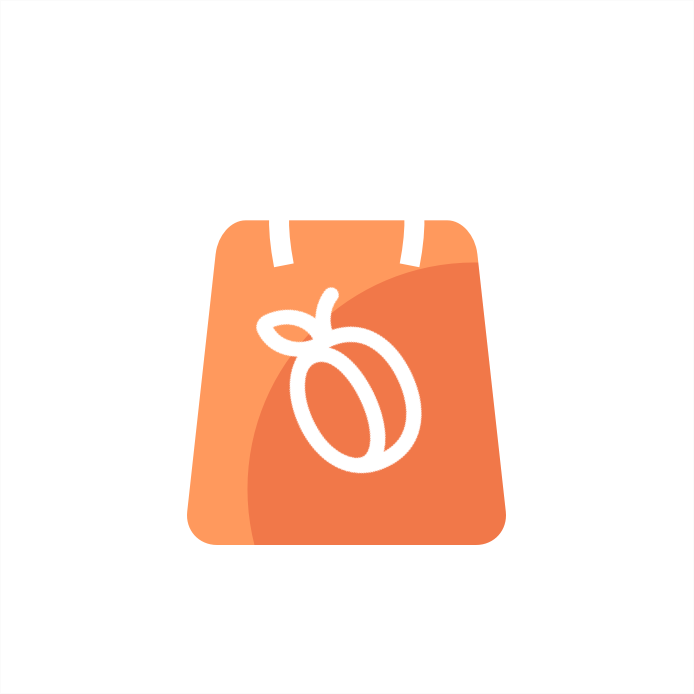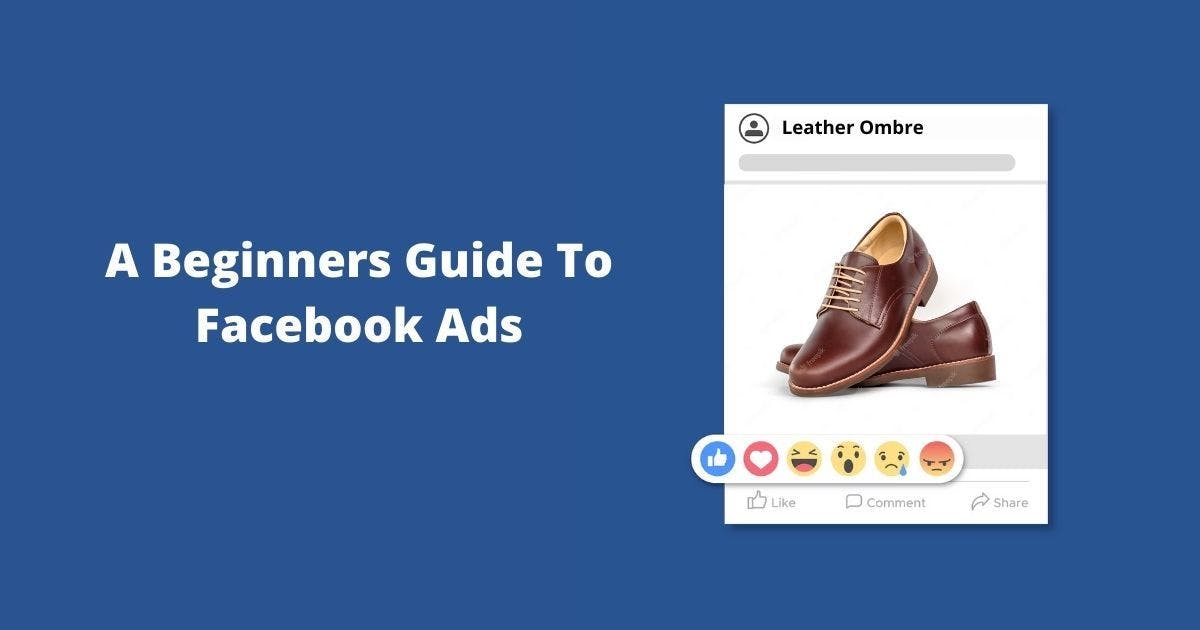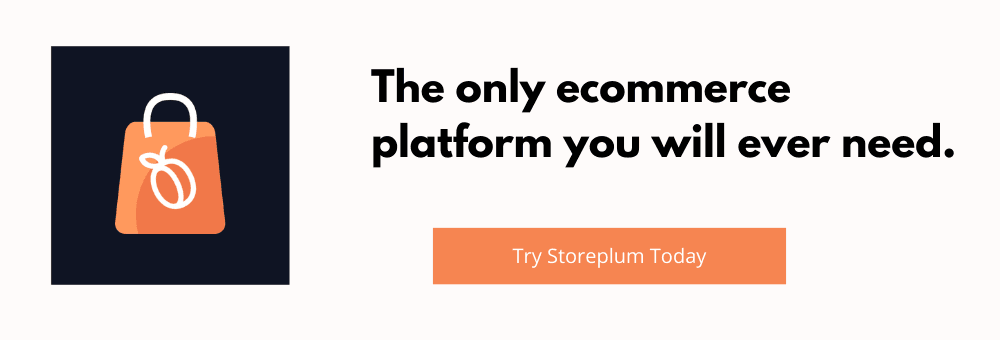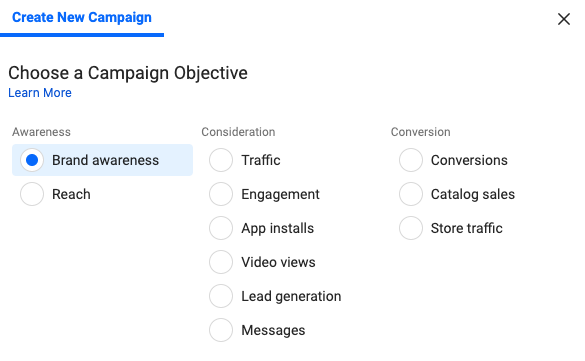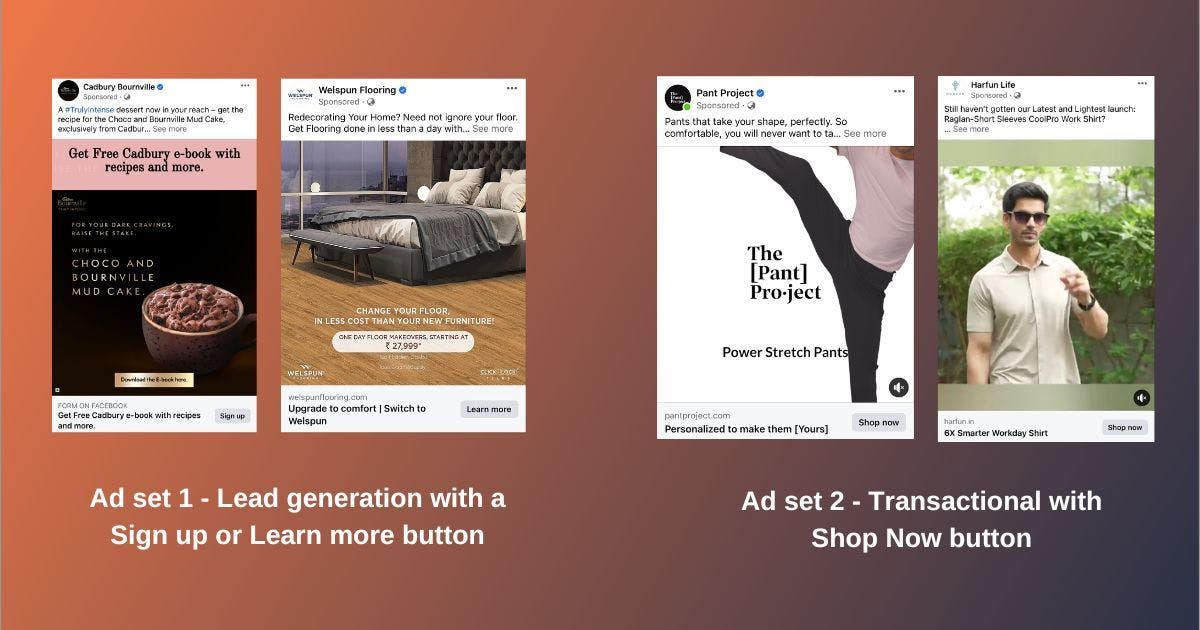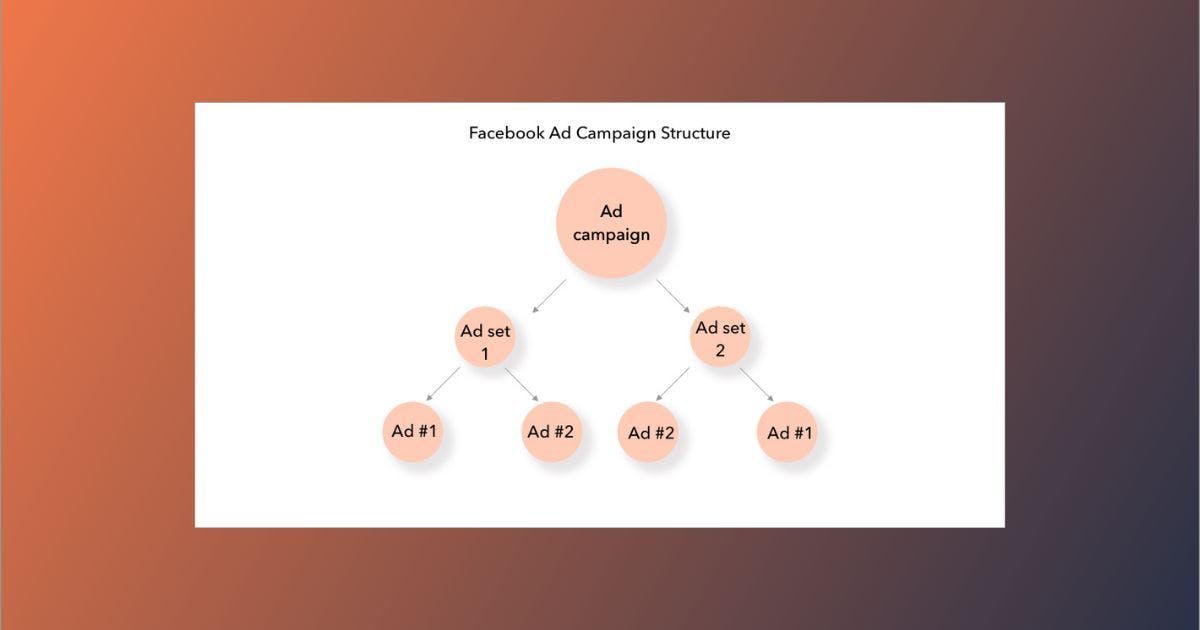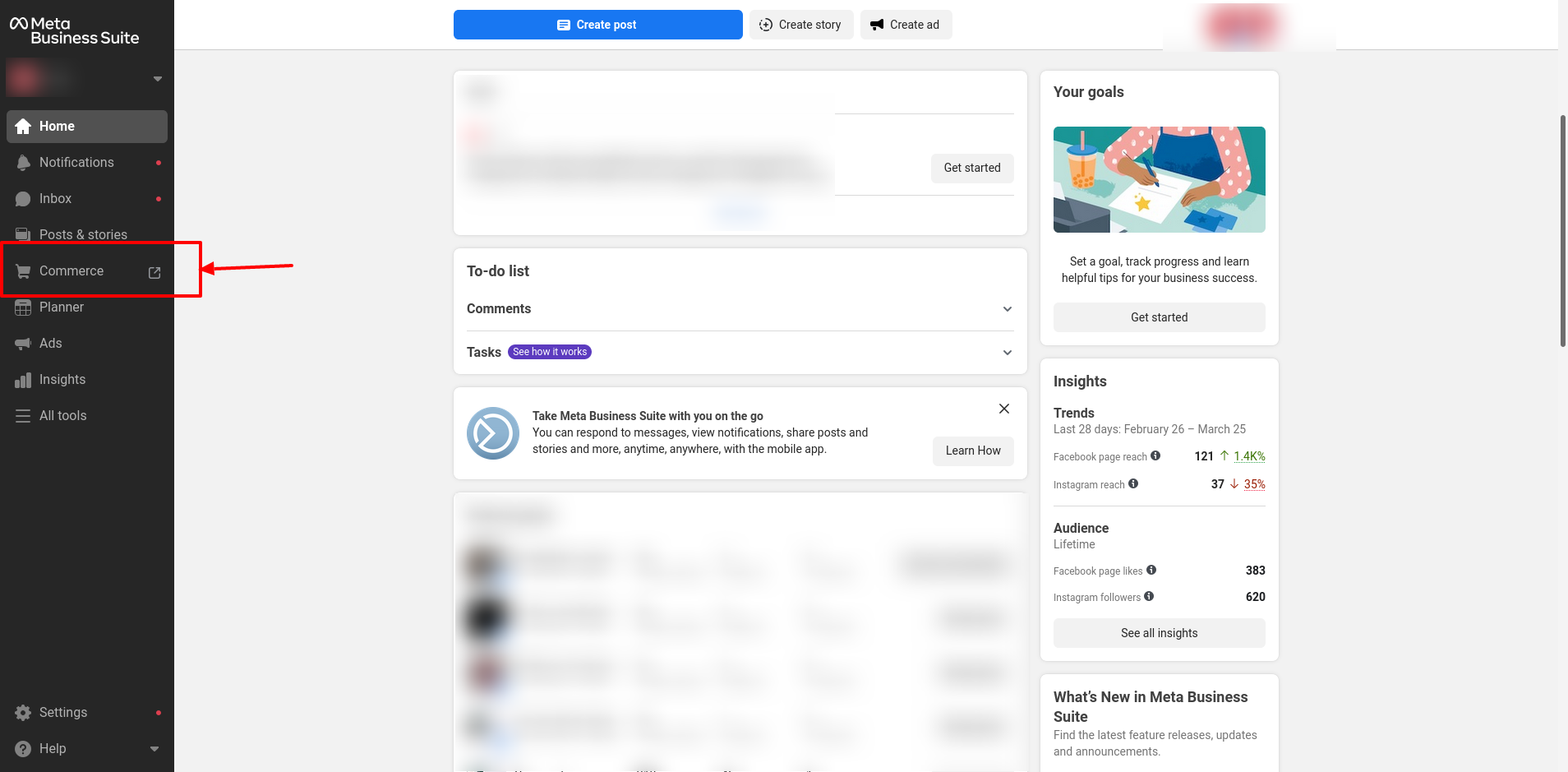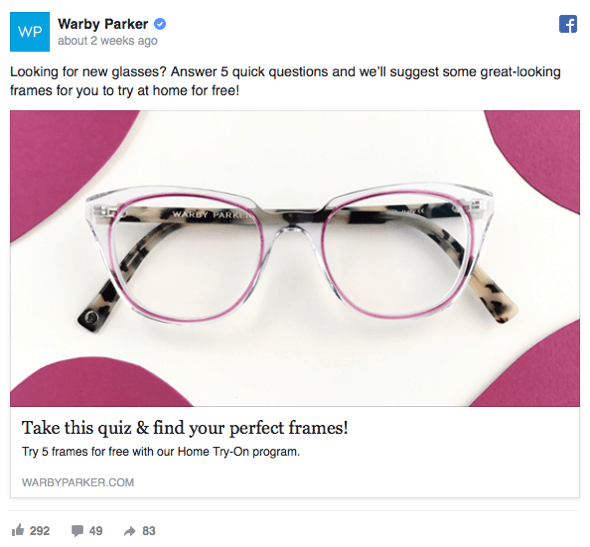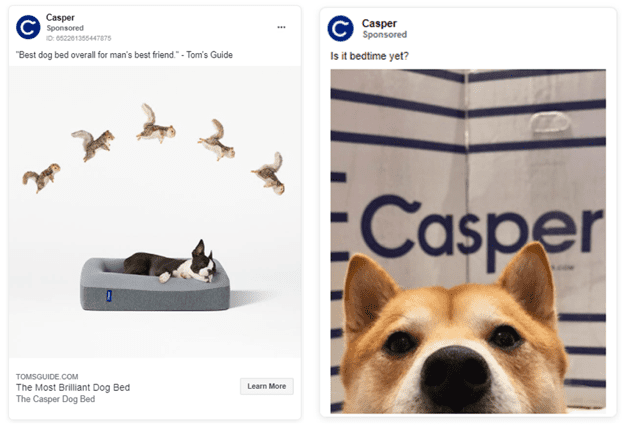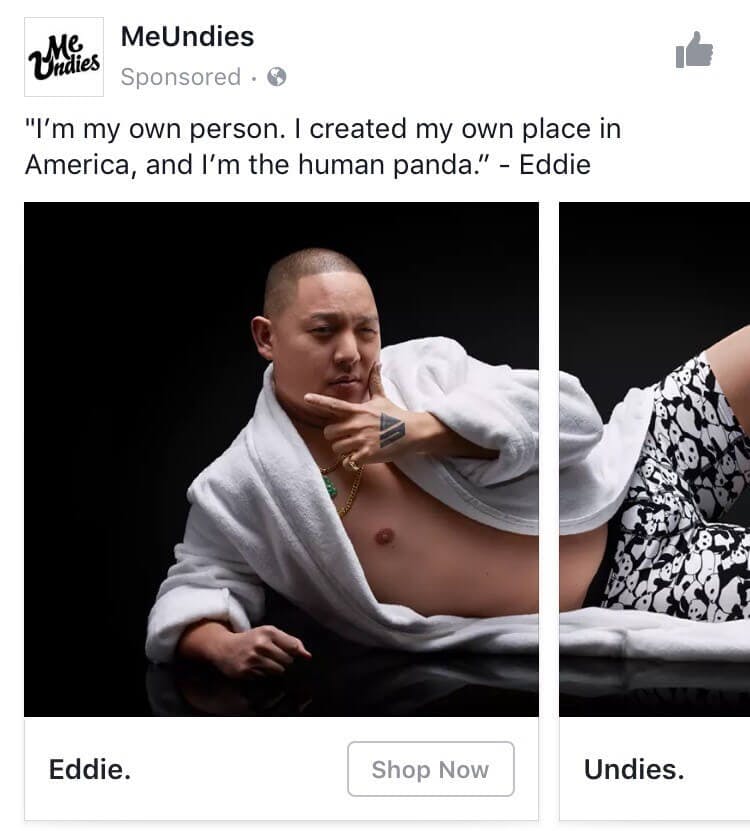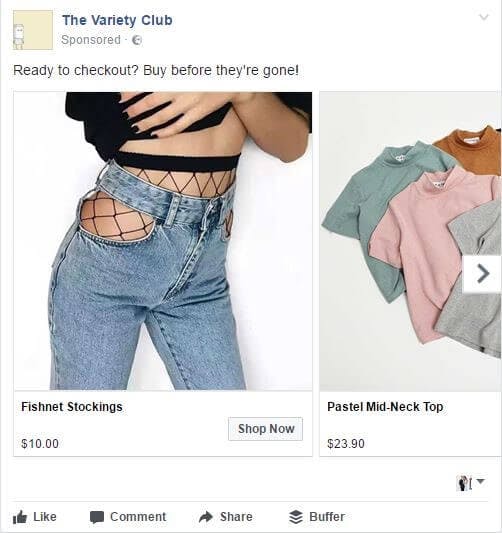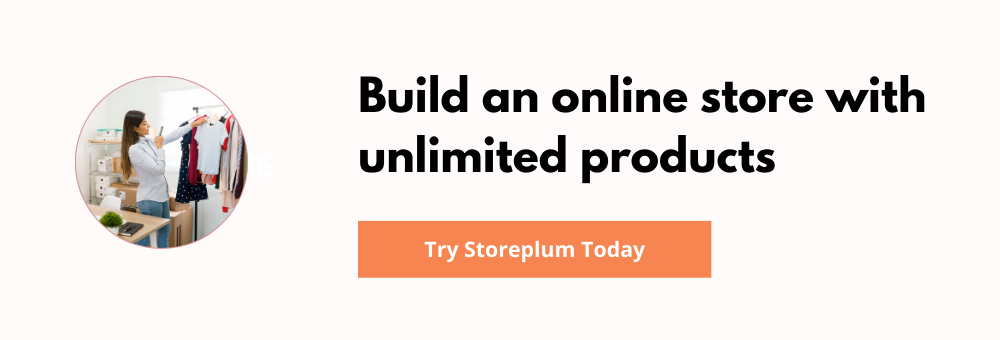Using Facebook Ads for Ecommerce: A Beginner's Guide

By Pritesh B
Posted | 22 min read
Table of contents
- Introduction
- Understanding Facebook Ads For Ecommerce
- Setting Up Your Facebook Business Manager and Ad Account
- Define Your Advertising Goals and Objectives
- Targeting Your Ideal Audience
- Choosing the Right Ad Format and Creative
- Setting Your Budget and Bidding Strategy
- Tracking and Measuring Ad Performance
Introduction
Facebook provides an unparalleled opportunity to reach a vast audience of potential customers.
From dynamic product ads to being a sales funnel, it still is one of the top ecommerce strategy for ecommerce marketing.
One of the main advantages of Facebook advertising is the ability to target specific demographics and interests.
This means you can reach people who are more likely to be interested in your products, resulting in a higher conversion rate.
It’s also able to retarget users who have already interacted with your brand or website.
Facebook also offers various types ad formats, including image ads, video ads, carousel ads, and more.
This allows you to showcase your products in a variety of ways and find what resonates best with your target audience.
In this article, we will review the basics of setting up a facebook commerce manager account, running successful ad campaigns and more. Let's go-
Understanding Facebook Ads For Ecommerce
Facebook Ads Manager is a comprehensive tool that lets you create and manage your ad campaigns, track performance, and optimize your budget for maximum ROI.
With Ads Manager, you can create any facebook ecommerce ad, such as image or video ads, carousel ads, and more, and target specific audiences based on demographics, interests, behaviors, and more.
You can also set your budget, bid for ad space, run facebook ads and track metrics such as impressions, clicks, and conversions.
One of the best things about Facebook Ads Manager is that it provides in-depth insights into your ad performance, including which ads are performing best and which facebook users are engaging with your content.
You can use this data to make informed decisions about your ad campaigns and adjust your strategy to maximize your results.
But before we do a deep dive into the technicalities, lets understand the basic terminology while using facebook ads manager.
1. Campaigns
When you start using Facebook Ads Manager, one of the first terms you'll come across is "campaigns."
A facebook campaign is the top-level of your Facebook ad types, where you set your objective and budget for a specific ad goal and further create an ad campaign.
In other words, its like running your marketing campaign to achieve a certain objective, which can be brand awareness, gathering user information, understanding market sentiments, etc.
Campaigns are the foundation of your entire Facebook advertising strategy.
2. Ad sets
An ad set is a group of ads that share the same budget, schedule, targeting, and placement.
Ad sets allow you to run facebook ads for ecommerce business and control the audience you want to reach, the placements you want to use, and how much you want to spend.
Ad sets also help you to organize and optimize your ads.
You can create multiple-product ads for the same campaign, each with its own targeting and budget.
This way, you can test different audiences and placements to see which ones perform best.
3. Ads
Ads are essential components of a successful Facebook advertising campaign.
These ads serve as the actual pieces of content that users encounter in their Facebook feeds.
They come in various formats, including single images, videos, carousels, or collections of images, and are strategically crafted to grab the attention of the intended audience.
Facebook offers a range of ad formats to cater to different marketing objectives.
Image ads are static visuals that can effectively convey your message in a visually compelling way. Video ads, on the other hand, provide an opportunity to engage users with dynamic and immersive content, leveraging the power of sight, sound, and motion.
Carousel ads enable advertisers to showcase multiple images or videos within a single ad unit, allowing for interactive and engaging storytelling. By leveraging this format, businesses can effectively highlight various products or features, driving higher engagement and conversions.
Slideshow ads offer a lightweight alternative to video ads by combining a series of images or video clips into an animated sequence. This format provides an engaging visual experience while requiring less bandwidth, making it suitable for users with slower internet connections.
When selecting the appropriate ad format for your campaign, it's crucial to consider factors such as your target audience, campaign objectives, and budget.
Understanding the unique advantages of each format allows you to choose the most effective option that aligns with your goals and resonates with your audience.
The entire ad management process can be broken down into three pieces-
- Create a campaign based on your business goals
- Have multiple ad sets for a campagin.
- Build the actual ad creatives.
4. Placements
When it comes to facebook ads, placements are a critical aspect of Facebook advertising as they can impact the ad's performance and user engagement.
The platform offers various placement options, including in-feed, Stories, suggested videos, instant articles, and more.
Advertisers can choose to place their ads in any of these locations, depending on their marketing objectives and target audience.
For example, if a business wants to reach a younger demographic, they may choose to place their ads in the Stories section as it is popular among this age group.
5. Bidding and budgeting
Bidding refers to the amount of money you're willing to pay for each ad impression, click, or conversion.
Facebook offers several bidding strategies, including cost per click (CPC), cost per thousand impressions (CPM), and cost per action (CPA).
Each strategy has its own benefits and can be used depending on your advertising goals.
Budgeting refers to the amount of money you're willing to spend on your ad campaign.
Facebook offers two types of budgets: daily and lifetime. Daily budgets allow you to set a maximum spend per day, while lifetime budgets allow you to set a total spend for the entire duration of the campaign.
Setting Up Your Facebook Business Manager and Ad Account
The Business Manager is a central hub where you can manage all aspects of your Facebook marketing efforts, including your ad account, pages, and teams.
To create a Business Manager account, start by logging in to your personal Facebook account and then navigate to the Business Manager homepage.
From there, you'll need to provide some basic information about your business and follow the prompts to create your account.
Once your Business Manager account is set up, you can create your ad account, which is where you'll manage your Facebook ads.
Within your ad account, you can create campaigns, ad sets, and ads, and set your budget and bidding strategies.
Adding your ecommerce store's Facebook Page
To add your Facebook Page, log in to your Business Manager account and go to the Business Settings. From there, select Pages and then click on the Add button.
You'll be prompted to enter your Facebook Page's name or URL.
Once you've added your Facebook Page, you can assign different roles to team members, including admins, editors, moderators, and advertisers.
This way, you can manage who has access to your Facebook Page and ensure that only trusted team members are making changes.
Adding your Facebook Page to your Business Manager account is essential because it allows you to create ads and run campaigns directly from your Page.
By this facebook will find facebook fans for your page. You can also track your Page's performance, including engagement, reach, and conversions.
Setting up your Ad Account in Facebook Business Manager is a straightforward process that involves a few simple steps.
First, log in to your Facebook Business Manager account, and go to the "Ad Accounts" tab. Click on the "Add New Ad Account" button, and choose the option to "Create a New Ad Account." Then, fill in the necessary details, including the account name, currency, and time zone.
Next, you'll need to associate your Ad Account with your ecommerce store's Facebook Page.
Go to the "Pages" tab, and click on the "Add New Page" button. Enter your store's Facebook Page URL, and follow the prompts to connect it to your Ad Account.
At the end, you'll need to add a payment method to your Ad Account to start running ads.
Go to the "Payment Methods" tab, and click on the "Add Payment Method" button. Follow the prompts to enter your payment information and verify your account.
Define Your Advertising Goals and Objectives
Before diving into a Facebook advertising campaign, it's crucial to define your advertising goals and objectives.
This step lays the foundation for a targeted and effective strategy, ensuring that your efforts align with your overarching business objectives.
1. Awareness: Building brand awareness and reach
If you want to use facebook as a business, it's important to make sure your target audience is aware of your brand and what you have to offer.
Facebook lets you run killer facebook ad types and targeting options that can help you achieve these goals.
To build brand awareness, you may want to consider running a Reach or Brand Awareness campaign.
These campaigns are designed to help you reach a large number of people and get your brand in front of new potential customers.
By using Facebook's targeting options, you can make sure that your ads are being shown to people who are most likely to be interested in your products or services.
For most of the times, awareness campaigns are also used for generating qualifies leads which can be either re-targeted using other ad sets or by a personal follow-up through email or a sales rep.
2. Consideration
Consideration campaigns can help you expand your reach and get your brand in front of new audiences who are more likely to be interested in your products or services.
This objective serves as the perfect launching pad for your advertising efforts, allowing you to create highly customized audiences based on a variety of factors, including interests, behaviors, and demographics.
One of the key advantages of consideration campaigns is their ability to attract users who are actively seeking solutions or information related to your industry or niche.
Consideration campaigns also provide a range of objectives that align with different stages of the customer journey.
Whether you want to build brand awareness, generate leads, drive website traffic, or encourage users to explore your offerings further, Facebook's consideration campaigns provide the necessary tools and features to achieve your goals effectively.
3. Conversions
Facebook's conversion campaigns are designed to help you optimize for and track the actions that matter most to your business.
In order to get started with these campaigns, you will have to set up Facebook Pixel- an analytics tool that tracks user interactions on your website
With FB Pixel, you can effectively measure and optimize your campaigns for conversions.
Conversion campaign provide you the flexibility to choose from various optimization strategies, such as maximizing conversions, target cost per acquisition (CPA), or return on ad spend (ROAS).
This helps you to focus your budget on the audiences most likely to take the desired action, ensuring that your ads are shown to individuals who are inclined to convert.
Facebook provides a range of tools to assist you in driving conversions effectively. For instance, you can create custom audiences based on past customer data or website visitors, enabling you to retarget individuals who have already shown interest in your brand.
This powerful feature enables you to gain valuable insights into user behavior, understand the effectiveness of your ads, and make data-driven decisions to enhance your marketing efforts.
You can use dynamic ads or lead generation ads to target people who have already shown an interest in your business. This objective is ideal for businesses with a well-established online presence and ecommerce stores that want to increase their sales.
Identifying your primary goal will provide focus and direction to your campaign, allowing you to tailor your messaging and strategy accordingly.
Alongside your primary goal, it's important to set specific and measurable objectives.
These objectives should be realistic, attainable, and time-bound.
For instance, if your goal is to increase sales, your objective could be to achieve a 20% increase in online purchases within a three-month period.
Setting specific objectives helps you track progress, evaluate the effectiveness of your campaign, and make data-driven optimizations to not only to your ad campaigns but also to your product pages.
Warby Parker, an eyewear brand, aims to increase website traffic and conversions.
They use Facebook ads to promote their trendy glasses and offer a virtual try-on feature. Their objective is to drive users to their website to explore and purchase their glasses.
Casper, a mattress and bedding brand, focuses on generating leads and driving conversions.
They use Facebook ads to promote their mattresses and offer discounts or limited-time promotions. Casper's objective is to capture user information and drive direct sales through their website.
It's important to regularly review and reassess your goals and objectives throughout your campaign.
As you gather data and insights, you may need to adjust your goals or refine your strategies to maximize results.
Facebook's robust analytics tools, such as the Ads Manager platform, provide valuable data on ad performance, audience engagement, and conversion tracking, enabling you to make informed decisions and optimize your campaigns for success.
Targeting Your Ideal Audience
Facebook ad campaigns are most effective when they are targeted against a laser focused set of audience.
Spraying and praying has hardly worked for any brand running facebook ads. Although it may work for some, the ROAS can increase significantly when ads are targeted.
Lets go through some of the basic ways to segment users while running an ad campaign on facebook.
Creating custom audiences based on demographics, interests, and behaviors
Custom audiences are groups of people who are already familiar with your business or who have shown interest in what you offer.
They can be created based on a variety of factors, such as demographics, interests, and behaviors.
This can help you create some of the best facebook ads for ecommerce businesses, as it’ll give facebook enough information and facilitates facebook to find certain audience.
Once created, you can use custom audiences to target your ads to those specific people.
This can be a powerful way to make sure your ads are reaching the right people and getting the most bang for your buck.
For example, if you're running an ad campaign for a new line of beauty products, you might create a custom audience of people who have previously purchased similar products or who have expressed interest in beauty and skincare.
Utilizing lookalike audiences to expand your reach
A lookalike audience is a group of users who have similar characteristics to your existing customers, which means they are more likely to be interested in your products or services.
By targeting a lookalike audience, you can increase the effectiveness of your advertising campaigns and drive more conversions.
To create a lookalike audience, you first need to have a source audience, such as a list of email addresses or a custom audience based on website traffic.
Facebook will then use its algorithms to find users who share similar interests, demographics, and behaviors to your source audience.
This is how you will be saving the most on your ad budgets once you get to know that what is working for your brand.
Retargeting potential customers who have interacted with your store
The next logical step would be Retargeting users.
Retargeting is a powerful strategy that allows you to re-engage with potential customers who have interacted with your ecommerce store but have not yet converted.
Facebookads for ecommerce to help make it easy to create retargeting campaigns that target people who have viewed your product pages, added items to their carts, or initiated checkout but didn't complete the purchase.
By retargeting potential customers, you can remind them of the products they were interested in and encourage them to return to your store to complete their purchase. This can be a highly effective way to increase your conversion rate and drive more sales.
Choosing the Right Ad Format and Creative
When advertising on Facebook, it's important to choose the right ad format to reach your marketing goals.
Facebook offers a variety of ad formats for ecommerce advertising, including photo ads, video ads, carousel ads, slideshow ads, and more.
By understanding the different ad formats available and how they work, you can choose the right format to reach your target audience and achieve your advertising goals.
Photo ads are the most straightforward format and display a single image with a caption. Make sure that you use high quality product images for landing pages as well as for facebook ad sets separately.
Video ads can be up to 240 minutes long and can be an effective way to engage users with dynamic content.
Carousel ads on the other hand allow you to display multiple images or videos that users can swipe through, and can be an excellent way to showcase multiple products or features.
Collection ads are similar to video ads but use a series of still images to create an animated effect.
There are also other ad formats available, such as showcase ads, instant experience ads, and facebook messenger ads.
Designing ad creatives that resonate with your audience
To create effective ads, it's essential to understand your target audience's needs and preferences. Your ad's copy, imagery, and overall design should speak to their pain points and aspirations.
Start by identifying your audience's demographic information, interests, and behaviors which will scale your ads to make them more efficient.
Use this information to craft messaging that speaks to their needs and desires.
Your ad's headline should be attention-grabbing, while the body copy should provide relevant information that encourages the audience to take action.
When it comes to imagery, choose visuals that are eye-catching and relevant to your product or service.
If possible, use high-quality images or videos that showcase your product in action or highlight its unique features.
MeUndies is known for its witty ads on facebook. The comic intent of the ad is inquisitive enough for users to check the website.
Writing compelling ad copy and headlines
The copy and headlines you choose are just as important as the visuals you use. A well-crafted message can be the difference between someone scrolling past your ad or taking action.
The first step in writing compelling ad copy is to understand your target audience.
What are their pain points, desires, and interests? Use this information to craft messaging that speaks directly to them and addresses their needs.
Next, focus on creating a clear and concise message. Keep in mind that people tend to skim content online, so you want to make sure your ad copy is easily digestible. Use short sentences and bullet points to break up text and make it more scannable.
Finally, be sure to include a clear call-to-action (CTA) that tells the viewer exactly what you want them to do next. Whether it's "Shop Now," "Sign Up," or "Learn More," the CTA should be prominently displayed and action-oriented.
The Variety Club does this effectively by its "Shop before its gone" FOMO ads.
Setting Your Budget and Bidding Strategy
It's essential to strike a balance between maximizing your ad spend and avoiding overspending.
First, consider your advertising goals and the ad format you plan to use.
If you're running a campaign focused on increasing brand awareness, a smaller budget may be appropriate. However, campaigns focused on driving conversions or sales may require a larger budget.
Facebook's Ad Manager allows you to set a daily or lifetime budget for each campaign.
It's crucial to monitor your spending regularly and adjust your budget as necessary. It's also essential to track your ad's performance to ensure you're getting a return on your investment.
Basics of Facebook's bidding options.
Understanding Facebook's bidding options is crucial for optimizing your ad campaigns and achieving your desired outcomes.
Experimenting with different bidding options and closely analyzing their impact on your campaign performance can help you refine your strategy over time
Facebook provides various bidding options that allow you to control how you bid for ad placements and optimize your budget. Here are a few bidding options that you can choose-
1. Lowest Cost (Automatic Bidding): This is Facebook's default bidding option, where the platform automatically optimizes your bids to get the most results at the lowest cost. Facebook takes into account factors such as audience targeting, competition, and ad quality to determine the bid for each ad auction.
2. Target Cost (Cost Cap Bidding): With this option, you set a target cost you're willing to pay for each desired outcome, such as conversions or link clicks. Facebook will aim to keep your average cost per outcome at or below the target cost while still delivering results.
3. Bid Cap: This bidding option allows you to set a maximum bid limit for each ad auction. Facebook will not exceed this limit, which gives you control over the maximum amount you're willing to pay for a desired outcome.
4. Value Optimization: This option is suitable for campaigns focused on maximizing the value derived from customer actions, such as purchases or app installs. Facebook uses machine learning to estimate the value each user may bring based on their past behavior and optimizes bids accordingly.
5. Bid Strategy: Facebook offers bid strategies tailored to specific objectives. For example, if your goal is to get more link clicks, you can choose the "Link Clicks" bid strategy, and Facebook will optimize your bids to maximize link clicks.
If your campaign is not performing as expected, you may want to increase your bids to reach a larger audience or improve the ad's placement.
Alternatively, if your campaign is performing well, you may be able to lower your bids and still achieve your desired results. You can always use a facebook ROI calculator to know your overall ROAS on a campaign.
It's essential to monitor your ad performance regularly and adjust your bids accordingly.
Tracking and Measuring Ad Performance
In order to track and monitor the performance of your ads, you will have to add Facebook pixel to your website.
Facebook Pixel is a piece of code that tracks visitors to your website and collects data on their behavior, allowing you to better understand and optimize your advertising efforts.
This helps you prepare for ecommerce facebook ads or dynamic ones as facebook dynamic ads help with lead generation.
Once the Facebook Pixel is installed, it will start collecting data on your website visitors.
This includes information on the pages they visit, the products they view, and whether they make a purchase. This data can be used to create custom audiences for retargeting and to optimize your ad campaigns for better performance.
Understanding key performance indicators (KPIs)
Once FB pixel starts collecting data, over a time, you should start seeing analytics on your ads manager dashboard.
Although it may seem straightforward, making sense out of analytics is not that easy. That is why you need to define a standard set of KPIs that you can monitor throughout the campaign.
KPIs help you track specific metrics that align with your advertising goals and objectives. Here are some key performance indicators commonly used in Facebook ads:
1. Reach: Reach measures the total number of unique users who see your ads. It indicates the size of your audience and the potential reach of your campaign.
2. Impressions: Impressions refer to the total number of times your ads are displayed, regardless of whether they were clicked or not. It gives you an idea of how frequently your ads are being viewed.
3. Clicks: Clicks represent the number of times users clicked on your ads. This metric measures the level of engagement and interest generated by your ads.
4. Click-Through Rate (CTR): CTR is the ratio of clicks to impressions and is expressed as a percentage. It measures the effectiveness of your ads in capturing users' attention and motivating them to click.
5. Conversion Rate: Conversion rate measures the percentage of users who completed a desired action, such as making a purchase or filling out a form, after clicking on your ads. It helps you assess the effectiveness of your campaigns in driving valuable actions.
6. Cost per Click (CPC): CPC indicates the average cost you pay for each click on your ads. It helps you evaluate the efficiency of your ad spend and compare the cost-effectiveness of different campaigns or ad sets.
7. Return on Ad Spend (ROAS): ROAS measures the revenue generated for every dollar spent on advertising. It provides insights into the profitability and effectiveness of your campaigns.
8. Engagement Metrics: Engagement metrics include metrics such as likes, comments, and shares. They measure the level of interaction and interest generated by your ads and indicate how well your content resonates with your audience.
9. Frequency: Frequency represents the average number of times each user sees your ads. Monitoring frequency helps you avoid ad fatigue and ensures your message reaches your target audience without becoming repetitive.
10. Cost per Acquisition (CPA): CPA measures the average cost incurred to acquire a desired action, such as a purchase or a lead. It helps you assess the cost-effectiveness of your campaigns in achieving specific objectives.
By monitoring these KPIs and analyzing their trends over time, you can gain insights into the performance of your Facebook ads and make data-driven decisions to optimize your campaigns for better results.
Conclusion
Now that you have a solid understanding of how to use Facebook Ads to grow your online store, it's time to put these strategies into action.
Don't be afraid to experiment and test different ad creatives, copy, and audiences to see what works best for your business.
Remember to keep an eye on your key performance indicators (KPIs) such as click-through rate (CTR), conversion rate, and return on ad spend (ROAS) to ensure that your campaigns are delivering results.
Scaling successful campaigns and adjusting underperforming ones is also key to driving continued growth for your online store.
So, what are you waiting for? Start applying these strategies to your own Facebook Ads campaigns and watch your ecommerce business thrive!
What are Facebook Ads for Ecommerce?
Facebook Ads for Ecommerce are advertisements that are created and run on Facebook to promote e-commerce businesses. It involves creating a Facebook Ad campaign and targeting it to the right audience. Facebook Ads can drive traffic to the e-commerce website, increase sales, and raise brand awareness.
What is a Facebook Pixel?
A Facebook Pixel is a piece of code that is added to a website to help track conversions from Facebook Ads. It tracks the behavior of visitors on the website, including what pages they visit, and whether or not they make a purchase. This data can be used to optimize Facebook Ads for better performance.
What are Dynamic Product Ads?
Dynamic Product Ads are a type of Facebook Ad that promotes products from an e-commerce store. These ads are retargeted to people who have already shown an interest in the product or visited the store. They show the exact product that the user viewed, along with personalized messaging to drive conversions.

Ecommerce advocate and Co-founder at Storeplum. I like to write about current trends in ecommerce, best practices and innovative ways on improving online store conversions.
